Written expression
In this unit we are going to learn how to write letters, there are different kinds of letters: personal and formal. It's difficult to write a letter in other language but, if you practise it will be easier. We are going to see both kinds of letters.
Esta secuencia contiene:
-
Más de 5 horas
-
7 actividades
-
14 recursos
-
Idioma:
- Castellano
Secuencia didáctica
-
Why it's important to write? How often do you write a letter, essay or things? When you write, do you do it in English? Writting is part of our lives, sometimes is difficult to write something if we don't know the topic or write something in an other language. But it's important to do it because the more you write the easier will be. Working with your classmate try to thing of more reasons why it's important to write. And, think too on what we can write: a story, a dialogue, a book, etc. You can use the following links as help.
-
Nowadays we don't write letters because we have internet and it's faster and easier to send an email. Have you ever written a letter or a postcard? Maybe you don't but, if you ask your fathers or grandfathers, I'm sure they do. Working with your classmate try to make a list about the essentials things that have to be in a letter and a postcard. Write down the list and share it with the class to see if you think on the same things. You can use the following links if you need help to remember.
-
Before writing a letter we are going to wach some tips on the following videos. Write down the relevant information, you can work with your classmate.
-
Now it's time to try to write a formal letter. Don't worry if you make mistakes because it's normal. First of all we are going to watch the video on the following link, there is an explanation of how to write a formal letter. There are others link with more examples. Write the formal letter by your own and then when you finish it, switch the formal letter with your classmate and try to correct it.
-
It's good to know how to write a formal letter but on your life you will write more personal letters. There are some differences, let's see how to write a personal letter.
-
In order to practice more writing personal letters, we are going to write a letter to one of your classmate. The teacher will write down all the students' names in small papers, then he or she will mix up all the papers. Finally, the student will choose a small paper with the name of the classmate. On the letter you can explain whatever you want. On the following link you have some examples. Are you ready to start?
-
We have arrived at the end of the unit... don't worry! We'll see you soon and before leaving let's practice a little bit more. On the following links are some exercise, do it on your own to see how much you learned. The last one, it's an email, look at it and do the exercises to practise and improve your writing skills. When you finish the exercises write an email like the example, you can choose the topic.
Objetivos
- Learn the meaning and the format of a formal letter.
- Learn the meaning and the format of a personal letter.
- Identify the different parts of a letter.
- Write a letter, formal and personal, using given points on the form of a letter.
- Know the types of letters.
- Write the name and address on the envelope.
- Improve written expression.
Criterios de evaluación
- Is able to write formal and personal letters using the correct format.
- Identifies the different parts of a letter.
- Knows and recognize the different types of letters.
- Knows and learns the meaning and the format of a formal letter.
- Knows and learns the meaning and the format of a personal letter.
- Writes a letter, formal or personal, using givenpoints on the form of a letter.
- Writes correctly the name and address on the envelope.
- Improve his/ hers writing using strategies and tips.
Cursos y asignaturas
-
15 años:
- Lengua extranjera
-
16 años:
- Lengua extranjera
-
Aún no hay comentarios, ¡comparte tu opinión! Inicia sesión o Únete a Tiching para poder comentar



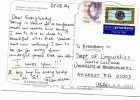
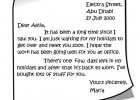







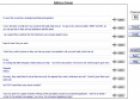


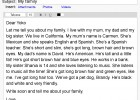
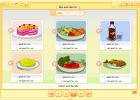



¿Dónde quieres compartirlo?
¿Quieres copiar el enlace?